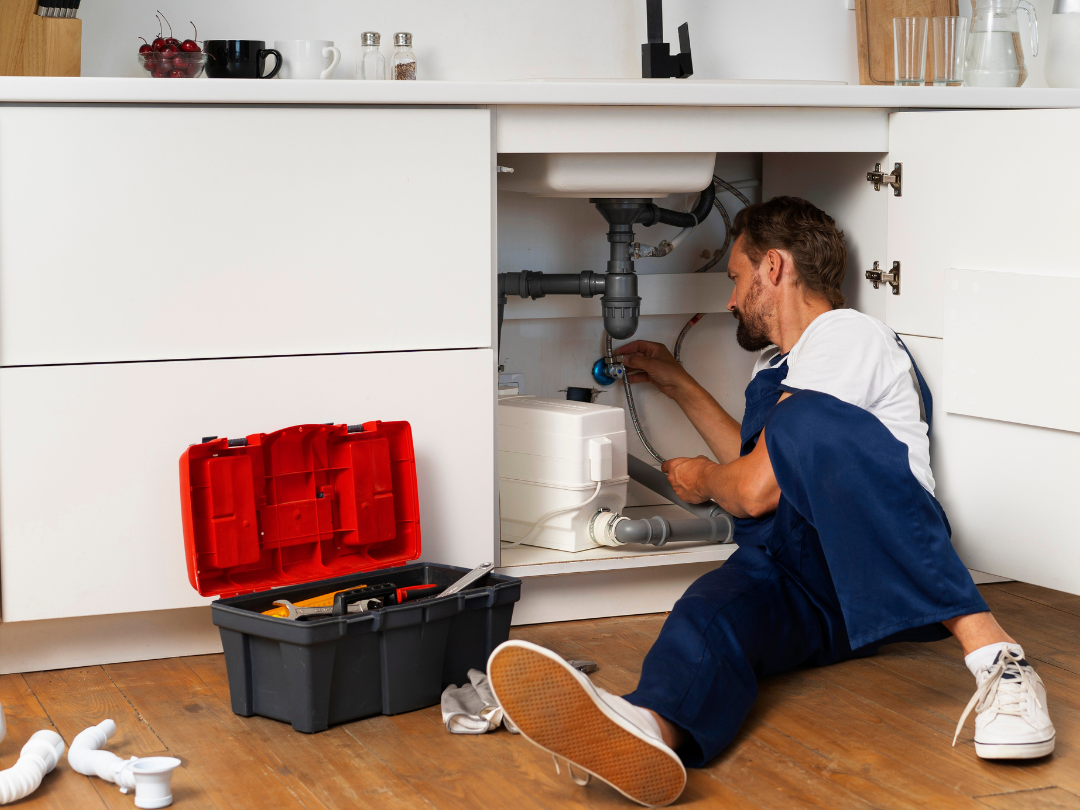As temperatures drop across North America, plumbing systems face increased pressure from freezing conditions, rapid temperature shifts, and heavy water usage. Homeowners in both the United States and Canada experience costly winter plumbing emergencies each year. Burst pipes, frozen water lines, and malfunctioning water heaters are among the most common. Preparing your home before the deep freeze arrives is not just preventative maintenance; it’s a financial safeguard.
This guide outlines practical steps to winterize your plumbing, identifies your home’s vulnerabilities, and explains when to call for professional help before a small issue becomes an expensive plumbing emergency.
1. Inspect and Insulate Vulnerable Pipes
Frozen pipes are among the most frequent winter plumbing issues. When water freezes inside pipes, it expands, exerting enough pressure to rupture even sturdy copper or PVC lines. According to the Insurance Institute for Business & Home Safety, a single burst pipe can release up to 250 gallons of water per day, causing extensive damage to walls, floors, and electrical systems.
Start with a full inspection of your plumbing system, focusing on areas exposed to cold air:
- Basements, crawl spaces, and attics
- Exterior walls and unheated garages
- Outdoor hose bibs and sprinkler lines
Use foam pipe insulation or heat tape to protect vulnerable sections. In colder regions such as Minnesota, Alberta, or Maine, heat cable systems with built-in thermostats can prevent freezing even during subzero temperatures.
If your home has older plumbing or inconsistent insulation, consider contacting a local emergency plumbing company to assess hidden areas and professionally insulate hard-to-reach lines. Professionals can identify weak spots homeowners often overlook, such as foundation penetrations and under-sink cabinet walls adjacent to exterior siding.
2. Drain and Disconnect Outdoor Water Sources

Outdoor plumbing is often the first to freeze because it’s directly exposed to cold air. Garden hoses, sprinkler systems, and exterior spigots can trap water that freezes and expands back into interior pipes.
Steps to protect outdoor water systems:
- Shut off the interior valve leading to outdoor faucets (usually located in the basement or utility room).
- Open outdoor faucets fully to drain remaining water.
- Disconnect and store hoses indoors.
- Blow out irrigation systems using an air compressor if applicable.
In regions like the Midwest or central Canada, even “frost-free” hose bibs can fail if not drained properly. Installing insulated faucet covers provides an additional layer of protection against wind and subfreezing temperatures.
3. Maintain a Consistent Indoor Temperature
Many homeowners lower thermostat settings at night or while away to save energy. However, when indoor temperatures dip too low, cold air can accumulate in unheated zones, increasing the risk of frozen pipes.
To balance efficiency with safety:
- Keep the thermostat at or above 55°F (13°C) at all times, even when away.
- Open cabinet doors under sinks to allow warm air to circulate pipes.
- Seal leaks near doors, windows, and electrical outlets to prevent cold drafts.
For vacation homes or properties that remain unoccupied during winter, install a smart thermostat and leak detection sensors. These devices can alert you through mobile notifications if temperatures drop dangerously low or water leaks occur, allowing for rapid response before significant damage happens.
4. Service Your Water Heater Before the Freeze
Water heaters work harder during the winter months as the incoming water temperature drops. The added strain can shorten a unit’s lifespan or cause sudden failure if not maintained properly. Sediment buildup inside the tank can also reduce heating efficiency and create corrosion.
Perform a full water heater inspection before winter begins:
- Drain a few gallons from the tank to remove sediment.
- Check the pressure relief valve for proper function.
- Inspect the anode rod and replace it if heavily corroded.
- Test the thermostat and heating element to ensure accurate operation.
If your water heater is older than 10 years or showing signs of rust, leaks, or inconsistent heating, plan for replacement before peak winter demand. For homes in colder northern climates, consider upgrading to an insulated or tankless system that maintains efficiency during extreme cold.
5. Prepare for Emergencies and Know the Signs of Freezing

Despite preventive measures, plumbing emergencies can still occur. Knowing early warning signs can minimize damage and repair costs:
- Unusual drop in water pressure
- Frost or condensation forming on visible pipes
- Gurgling noises or intermittent water flow
- No water flow from faucets on extremely cold days
At the first sign of freezing, shut off the main water valve immediately and gently warm affected areas using a space heater or hair dryer; never use an open flame. If the situation escalates or you suspect a burst, contact professional plumbing services right away.
Homeowners should also know where their main water shut-off valve is located, typically near the water meter or where the main line enters the house. Label it clearly for easy access.
6. Long-Term Winter Plumbing Protection
Preventing cold-weather damage isn’t a one-time task but part of a broader home maintenance plan. To build long-term resilience:
- Schedule annual plumbing inspections before winter.
- Upgrade exposed piping to PEX, which resists cracking under freezing pressure.
- Install automatic shut-off valves and water flow sensors.
- Keep a home emergency kit with a flashlight, towels, and a wrench for quick shut-off access.
For homeowners in rural or high-altitude regions, where power outages are common, ensure your heating system has a reliable backup source such as a generator to prevent freezing when the power fails.
Winter months plumbing preparedness requires both awareness and action. Taking the time to insulate pipes, service your water heater, and drain outdoor fixtures can prevent thousands of dollars in potential damage. Homeowners in both the U.S. and Canada face similar risks from cold snaps and sudden temperature drops, making proactive maintenance essential.
Even small leaks or insulation gaps can become catastrophic under freezing pressure. Inspect now, repair early, and keep professional help on standby for peace of mind throughout the season.

